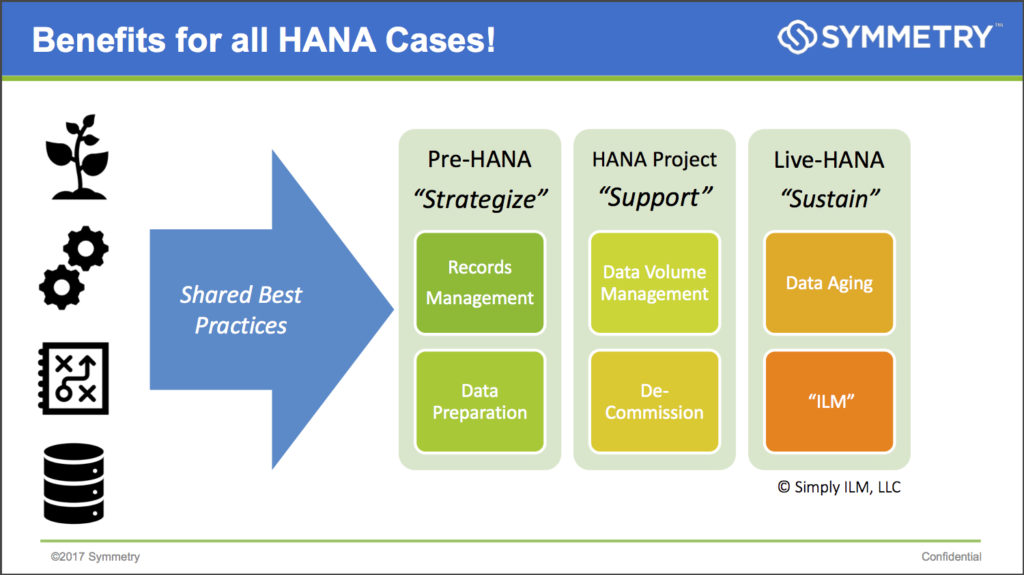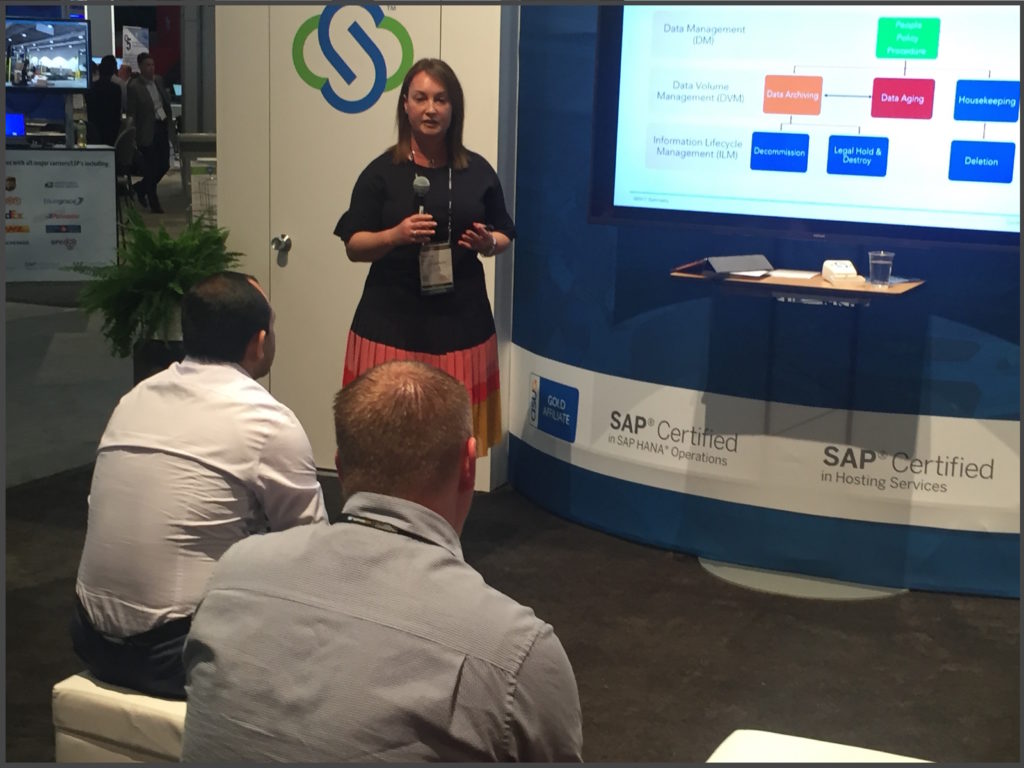Author: Deanna
At SAPPHIRE NOW, back in May, I had the opportunity to present a session at the Symmetry booth. The topic remains as timely now, a few months later, as it was then: best practices for data volume management while transitioning to HANA. In fact, with HANA positioned as the ongoing leader in SAP setups and conversions, this is one topic we’ll be talking about for years to come.
In my more than 17 years of data archiving experience, I’ve seen a lot of unique situations throughout the SAP landscape. After partnering with companies across a wide range of industries and sectors, it’s clear that each and every one of them warrants a tailor-fit data management solution. Yet despite the need to adapt solutions to the company, there are similarities, and most importantly, a set of best practices for data volume management that every organization should be aware of.
Today, with HANA being the platform of choice for a growing number of organizations, I share with you our approach to best practices for data volume management in HANA:

As demonstrated in the above graphic, we divide our approach in to 3 phases: 1) Pre-HANA Launch, 2) During HANA Implementation, and 3) Post-HANA Launch.
It is imperative to strategize about data during early conversations regarding your organization’s HANA transition. During this phase, we focus equally on records management and data preparation. Being organized and efficient early on ensures not only that your HANA implementation runs smoothly, but that your resources are managed effectively–both from a time investment and cost perspective.
Throughout the HANA transition, our role is to provide support in implementing solid, proven data volume management practices that will keep your organization’s data organized and compliant well into the future. A HANA data management strategy should include a review to identify data de-commissioning opportunities, which could offer substantial cost and space savings for existing and new HANA environments.
Post-launch, best practices for data volume management continue with data archiving and the introduction of data aging. Data aging balances data volumes between memory and disc during the on-line residence timeline. Post-launch is also where information lifecycle management (ILM) is more important than ever. By this point, processes have been established, and this is the right time to solidify the journey. Practicing the data retention principles created as part of the data volume management strategy protects the investment–and the company.

During my SAPPHIRE NOW booth presentation, we discussed a few common questions that address the value of this “before, during, and after” approach:
- Will archiving cause data issues if completed before HANA?
- How do we prioritize data volume management?
- What resources (and allocation) are needed for an archiving project?
Archiving benefits the HANA effort for the reasons already stated in this article. In S/4 Finance upgrades, there is an added benefit. The data model changes, and several parts of finance (data objects) will change as well. By reducing these areas before HANA, conversion doesn’t need to include data serving little or no value to the new system.
Prioritizing the strategy begins with casting a wide enough net to catch significant opportunities, alongside those otherwise unrecognized, yet essential ones. Our assessment approach includes a comprehensive health check on the data, a key indicator of future challenges beyond data volumes in the HANA environment.
One of the biggest challenges our customers talk with us about is bringing together the various teams and stakeholders in an archiving project. Nearly half of our projects have been rescue missions, with consistent issues being a lack of team engagement, turnover, and problems with service continuity. Functional teams provide vital input to an archiving project. The ask is generally 25% allocation from functional team members, though the allocation is more like 10-20% most of the time. Flexibility, creativity, and a focus on solutions are at the heart of our approach to delivering with limited resources.
Best practices for data volume management during the transition to HANA make it clear that DVM needs to be a part of the conversation early on. To learn more about integrating DVM into your organization’s HANA transition, contact Deanna Mollett at 817-291-5276 today.






